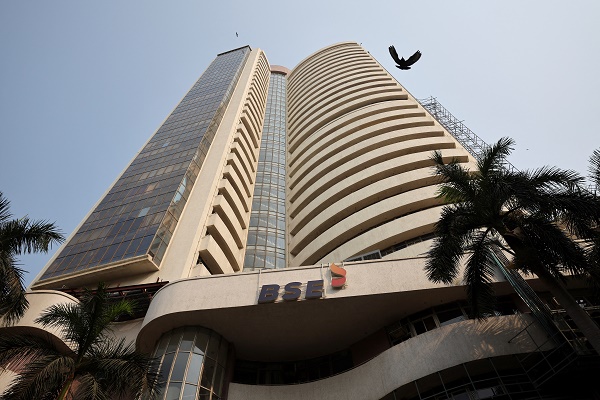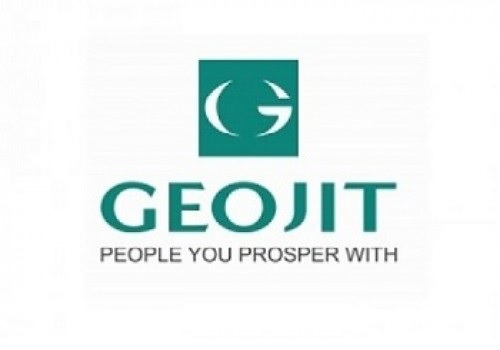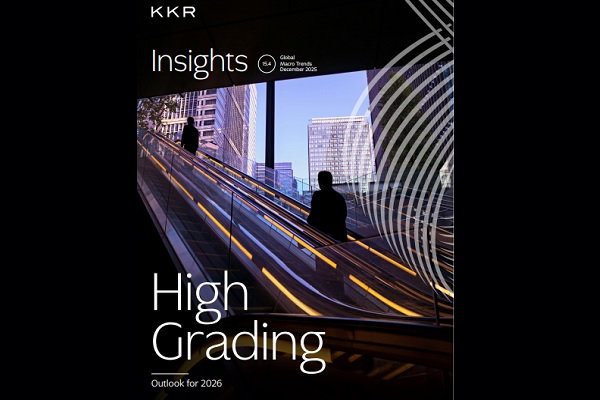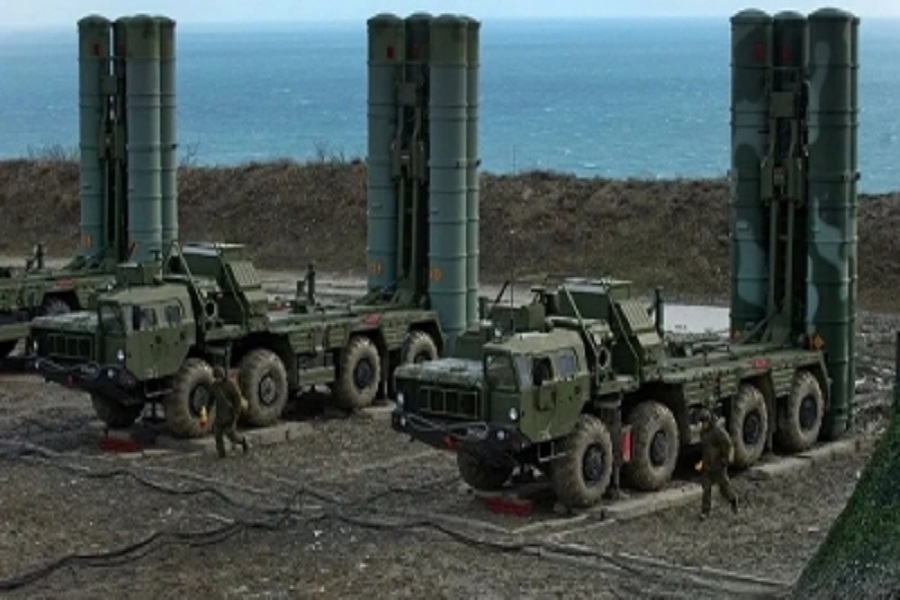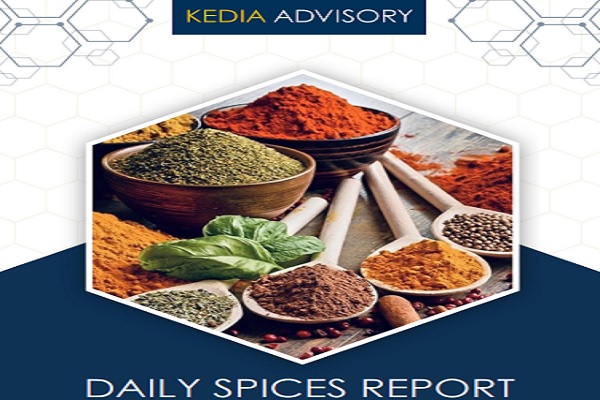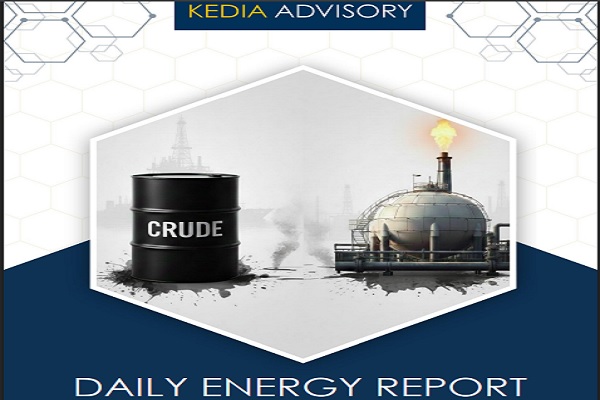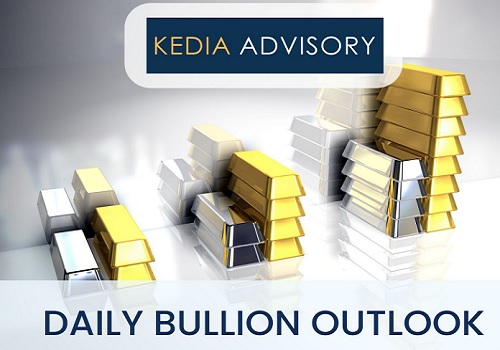Aluminium trading range for the day is 269.3-273.5 - Kedia Advisory

Gold
Gold prices rose by 0.61% to 1,20,522, supported by a broad risk-off sentiment as investors sought safety amid declines in global equities, particularly in AI and technology sectors. The yellow metal’s upside was capped by diminishing expectations of further U.S. rate cuts after several Federal Reserve officials signaled that the recent reduction could be the last for this year. The probability of another rate cut in December has fallen to 69% from 90% before the FOMC meeting. Meanwhile, easing trade tensions and China’s decision to remove tax exemptions for certain retailers may moderate the strong gold-buying trend in the world’s largest consumer market. In India, gold was sold at a discount of up to $12 per ounce, reversing from last week’s premium of $25, as post-festival demand weakened. Conversely, other Asian hubs witnessed steady to higher premiums, with China trading at par to a $4 premium and Singapore and Hong Kong showing small markups. Global gold demand surged 3% year-on-year to 1,313 tons in Q3 — the highest on record — driven by a 17% jump in bar and coin demand, mainly from India and China. ETF inflows rose sharply by 134%, offsetting a 23% drop in jewellery demand. Central banks also remained net buyers, increasing purchases by 10% to 219.9 tons. Fresh buying was seen as open interest rose 1.7% to 13,562 with prices gaining 725. Support lies at 1,20,060 and 1,19,595, while resistance is seen at 1,20,830 and 1,21,135.
Trading Ideas:
* Gold trading range for the day is 119595-121135.
* Gold prices rose supported by a broad risk-off sentiment that boosted the appeal of safe-haven assets.
* However, gains were limited by fading expectations of US rate cuts.
* Fed officials echoed Chair Powell’s hawkish tone suggesting the recent cut could be the year’s last.
Silver
Silver prices rose by 1.26% to 1,47,321, supported by a global risk-off sentiment that lifted safe-haven demand, even as a stronger dollar capped gains. The sharp decline in global equities amid worries about stretched valuations and uncertainty over future U.S. rate cuts encouraged investors to move toward defensive assets like silver. The probability of a December Fed rate cut eased to 69%, down from 90% before last week’s FOMC meeting. Meanwhile, liquidity conditions in the London silver market improved after large shipments from the U.S. and China helped ease the recent physical shortage that had temporarily pushed London spot prices above U.S. Comex futures. According to the London Bullion Market Association, vaults in London held 24,581 tonnes of silver worth $36.5 billion at the end of September. Investment demand remains a strong driver — silver ETPs saw net inflows of 95 million ounces in the first half of 2025, pushing global holdings to 1.13 billion ounces, just 7% below record levels seen in early 2021. Retail investment demand also remained firm, particularly in India, where it rose 7% year-on-year. The Silver Institute projects the global silver deficit to narrow by 21% to 117.6 million ounces this year due to slightly higher supply and lower demand. Short covering was observed as open interest fell by 2.98% to 20,245 while prices gained 1,837. Support is placed at 1,46,060 and 1,44,805, while resistance is seen at 1,48,010 and 1,48,705.
Trading Ideas:
* Silver trading range for the day is 144805-148705.
* Silver climbed as global risk-off sentiment boosted demand for safe-haven assets, though a stronger dollar limited upside.
* Federal Reserve officials signaled caution toward additional easing.
* Markets now pricing in a 69% chance of a 25 bps rate cut next month, down from about 90% before last week’s FOMC decision.
Crude oil
Crude oil prices fell by 1.78% to 5,305 as traders weighed a sharp rise in U.S. inventories against growing signs that sanctions on Russian oil exports are beginning to bite. The American Petroleum Institute (API) reported a significant inventory build of 6.5 million barrels for the week ended October 31, the largest increase in over three months, reversing the previous week’s 4 million-barrel decline. This pushed total U.S. crude inventories to a year-to-date gain of 3.6 million barrels, prompting a reassessment of global supply dynamics. Official EIA data also confirmed a 5.2 million-barrel increase, exceeding expectations, while gasoline and distillate stocks dropped by 4.73 million and 0.64 million barrels respectively, indicating continued strength in refined fuel demand. Adding to pressure, Libya announced plans to ramp up production to 1.6 million barrels per day (bpd) next year and 2 million bpd within five years, contributing to broader supply concerns. Meanwhile, OPEC+ maintained its demand outlook but signaled higher supply through 2026 as the group accelerates output quota increases. The organization reported a September production rise of 630,000 bpd to 43.05 million bpd, reducing the expected 2026 supply deficit to just 50,000 bpd. The market witnessed fresh selling with open interest rising by 0.68% to 13,512 while prices declined by 96. Crude oil finds support at 5,267 and 5,230, while resistance is placed at 5,372 and 5,440.
Trading Ideas:
* Crudeoil trading range for the day is 5230-5440.
* Crude oil dropped as traders weighed a sharp rise in inventories against signs that US sanctions on Russia are starting to take effect.
* API report indicated the biggest increase in U.S. inventories in more than three months for the week ended October 31
* Libya considers raising oil output to 1.6 million bpd next year
Natural gas
Natural gas prices declined by 2.81% to 377.2 as higher output and mild weather forecasts weighed on demand prospects. Meteorological models predict above-normal temperatures across much of the U.S. through mid-November, keeping heating requirements below seasonal norms. Production in the Lower 48 states has increased in November, averaging around 107 billion cubic feet per day (bcfd), up from October levels, further adding to supply pressure. Record-high output earlier this year has already elevated storage inventories, which now stand 4% above the seasonal average, indicating comfortable availability ahead of peak winter demand. According to the U.S. Energy Information Administration (EIA), energy firms injected 74 billion cubic feet of natural gas into storage for the week ending October 24, surpassing expectations of a 71 bcf build. This pushed total storage to 3,853 bcf — 0.8% higher than last year and 4.6% above the five-year average. The EIA also forecast record production and consumption in 2025, projecting dry gas output to rise from 103.2 bcfd in 2024 to 107.1 bcfd in 2025 and 107.4 bcfd in 2026. Domestic demand is also expected to grow modestly, while LNG exports are set to rise to 14.7 bcfd in 2025 and 16.3 bcfd in 2026, reflecting robust overseas appetite. The market witnessed long liquidation with open interest dropping by 18.28% to 17,389 as prices fell by 10.9. Natural gas finds support at 373 and 368.8, while resistance is seen at 383.6 and 390.
Trading Ideas:
* Naturalgas trading range for the day is 368.8-390.
* Natural gas fell as output increased and forecasts pointed to mild weather, reducing near-term heating demand.
* Meteorologists expect above-normal temperatures across most of the country through mid-November, keeping heating demand subdued.
* Average gas production in the Lower 48 states is rising in November from 107 bcfd in October.
Copper
Copper prices gained 0.49% to 1001.75, supported by easing trade tensions between the U.S. and China after Beijing announced the removal of export controls on 15 U.S. entities and the suspension of measures on 16 more. However, upside remained limited amid a firm U.S. dollar and persistent demand worries from China, whose official PMI showed a seventh straight month of factory contraction. The Yangshan copper premium fell to $35 a ton, reflecting weaker Chinese import demand. Meanwhile, Chile’s Codelco trimmed its 2025 output forecast, though production still exceeds 2024 levels, while Glencore and Anglo American reported lower output in the first nine months, keeping supply concerns intact. China’s copper concentrate imports dropped 6.2% in September to 2.59 million tons following disruptions at Freeport-McMoRan’s Grasberg mine, which declared force majeure after a fatal mudslide. However, total imports for January–September rose 7.7% year-on-year to 22.63 million tons, while refined copper imports surged 14.12% in September. The International Copper Study Group (ICSG) expects a refined copper surplus of 178,000 tonnes in 2025, followed by a 150,000-tonne deficit in 2026, with mine output growing 1.4% in 2025 and usage up 3%. The market witnessed short covering, with open interest down 0.49% to 9,784 as prices rose 4.9. Copper has support at 995.8 and 989.7, while resistance is seen at 1005.3 and 1008.7. A move above resistance could open the way toward further upside momentum.
Trading Ideas:
* Copper trading range for the day is 989.7-1008.7.
* Copper gains amid signs of easing trade tensions between Washington and Beijing
* Chile’s Codelco, cut its forecast for 2025 output, but new goal still exceeds the 2024 level.
* The Yangshan copper premium, stayed at $35 a ton, down from $58 earlier in late September and a major retreat from above $100 in May.
Zinc
Zinc prices slipped by 0.5% to 300.45, pressured by weak Chinese demand and a stronger U.S. dollar, which curtailed buying interest. The latest data from the Shanghai Metals Market showed zinc treatment charges rising to $87.5 per ton, a significant recovery from negative levels seen late last year, reflecting ample concentrate supply. China’s private sector PMI fell to 50.6 in October, missing expectations, while the official manufacturing PMI contracted for a seventh straight month at 49.0, signaling continued pressure on industrial demand. However, LME zinc inventories remained critically tight, dropping to just 35,200 tons — down nearly 85% from the start of 2025 — the lowest since early 2023. The steep backwardation in LME spreads, with the cash contract premium at $170, underscores a pressing short-term supply shortage. In contrast, China’s domestic zinc stocks rose sharply to 162,000 tons, highlighting a growing divergence between surplus conditions in China and acute shortages overseas. The International Lead and Zinc Study Group (ILZSG) reported a global refined zinc market surplus of 47,900 tons in August, bringing the year-to-date surplus to 154,000 tons, up from 138,000 tons a year earlier. China’s refined zinc production fell 4% month-on-month in September but surged 20% year-on-year, with further output increases expected in October. Zinc remains under long liquidation, with open interest down 1% to 2,581. Support is at 299.6 and 298.6, while resistance is at 301.3 and 302. A break above resistance may open the door for short-covering gains.
Trading Ideas:
* Zinc trading range for the day is 298.6-302.
* Zinc eased amid Chinese demand and a firm dollar pressured the market.
* China's factory activity shrank for a seventh month in October, with the official manufacturing PMI falling to 49.0.
* International Lead and Zinc Study Group reported that refined zinc production has fallen more than 2% this year
Aluminium
Aluminium prices edged up by 0.2% to 271.95, supported by lingering supply concerns but capped by weak Chinese factory data and a firm U.S. dollar. China reaffirmed its commitment to preventing overcapacity in metal production to contain deflationary risks, while inventories on the Shanghai Futures Exchange dropped 3.89% from last Friday, indicating steady consumption. However, sentiment was weighed by softening demand expectations after the U.S. Federal Reserve’s rate cut and a slowdown in global industrial activity. On the supply side, disruptions continued — Century Aluminium’s Grundartangi smelter in Iceland suspended one of two potlines due to electrical issues, while Alcoa announced the permanent closure of its Kwinana refinery in Australia amid deteriorating ore quality, tightening the market outlook. Global primary aluminium output rose modestly by 0.9% year-on-year in September to 6.08 million tonnes, according to the International Aluminium Institute. Japanese port stocks increased slightly to 341,300 tons, while China’s exports of unwrought aluminium and products fell to 521,000 tons in September from 534,000 tons in August. Imports surged 35.4% year-on-year to 360,000 tons, highlighting strong domestic demand. Meanwhile, Goldman Sachs trimmed its aluminium price forecast to $2,350 per ton for late 2026, citing potential market surplus from slower demand growth. The market witnessed short covering with open interest down by 2.13% to 3,305. Aluminium has support at 270.7 and 269.3, while resistance is at 272.8 and 273.5. A break above resistance may extend the upward momentum in the near term.
Trading Ideas:
* Aluminium trading range for the day is 269.3-273.5.
* Aluminium gains amid lingering supply concerns but upside seen capped on Chinese factory data.
* China reiterated its priority of preventing overcapacity in metal production to curb deflationary pressures.
* Aluminium inventories in warehouses monitored by the Shanghai Futures Exchange fell 3.89% from last Friday
Turmeric
Turmeric prices fell marginally by 0.37% to 14,620 amid an increase in acreage driven by favorable monsoon rains this season. Preliminary estimates indicate turmeric acreage may rise by 15–20% to about 3.30 lakh hectares in 2024–25, compared to 3 lakh hectares last year. However, the downside remained limited as heavy rainfall in key growing regions such as Maharashtra, Andhra Pradesh, and Karnataka has affected yields and caused crop damage. Around 15% of turmeric acreage in Nanded has been adversely impacted by excessive rains, while high humidity in Erode has led to disease outbreaks and storage challenges. Market arrivals remain tight, with turmeric stocks in Warangal nearly depleted and no fresh inflows in recent days. Strong buyer interest in Duggirala, where new crop quality is superior, has kept demand firm, with daily trade volumes ranging between 1,000 and 1,200 bags. Nearly 50–55% of the new crop has already been traded, and steady arrivals are expected to continue through June. Turmeric exports rose by 3.31% to 80,156 tonnes during April–August 2025, supported by a 7.27% year-on-year rise in August shipments. The market witnessed long liquidation as open interest fell 0.04% to 11,700 while prices declined by 54. Turmeric now finds support at 14,438, and a break below could test 14,254 levels. Resistance is seen at 14,850, and a move above may push prices toward 15,078.
Trading Ideas:
* Turmeric trading range for the day is 14254-15078.
* Turmeric dropped amid increase in acreage due to favourable rains during the current sowing season.
* However downside seen limited as yields in Maharashtra, Andhra Pradesh and Karnataka have been affected due to rains.
* Due to continuous rains in Erode, disease outbreaks have started emerging in some areas.
* In Nizamabad, a major spot market, the price ended at 14592.85 Rupees dropped by -0.13 percent.
Jeera
Jeera prices declined by 0.76% to 20,185 as weak export demand after the end of the retail season weighed on sentiment. Traders reported subdued activity from overseas buyers, with most export commitments being met from existing stocks. Comfortable domestic supply and muted international interest also added pressure, though downside remained limited due to low arrivals amid Diwali holidays. The recent reduction in GST on jeera to 5% is expected to support FMCG exports and domestic consumption in the coming months. Market reports indicate that farmers still hold around 20 lakh bags of cumin, with only 3–4 lakh bags likely to be traded before the season ends, leaving an estimated carryover of about 16 lakh bags. India’s cumin production for the current year is estimated at 90–92 lakh bags, lower than last year’s 1.10 crore bags, due to reduced sowing area. Production in Gujarat is estimated at 42–45 lakh bags and in Rajasthan at 48–50 lakh bags. Meanwhile, output in other producing nations like China, Turkey, Syria, and Afghanistan remains constrained by adverse weather and geopolitical issues, but this has yet to translate into stronger Indian exports. Jeera exports fell 17.02% during April–August 2025 to 85,977 tonnes compared to last year. The market witnessed long liquidation as open interest dropped 4.45% to 2,643 while prices fell 155. Jeera now finds support at 20,020, and a break below could test 19,840 levels. Resistance is seen at 20,430, and a move above may lift prices toward 20,660.
Trading Ideas:
* Jeera trading range for the day is 19840-20660.
* Jeera dropped due to weak export demand post retail season.
* Pressure also seen due to comfortable supplies and tepid export interest amid adequate existing stocks.
* Traders attributed the fall mainly to the conclusion of the retail season and continued inactivity on the part of foreign buyers.
* In Unjha, a major spot market, the price ended at 20199.5 Rupees dropped by -0.41 percent.
Views express by all participants are for information & academic purpose only. Kindly read disclaimer before referring below views
.jpg)
